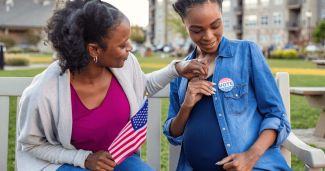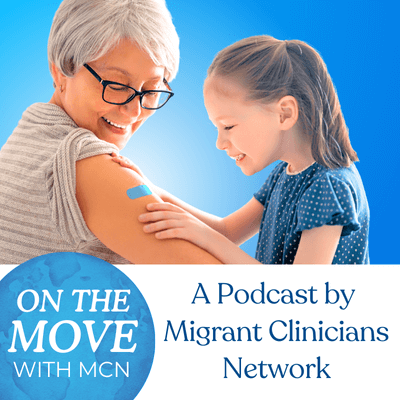Voting is a Health Justice Issue! How Community Health Centers Can Improve Health Outcomes by Encouraging the Community to be Civically Engaged
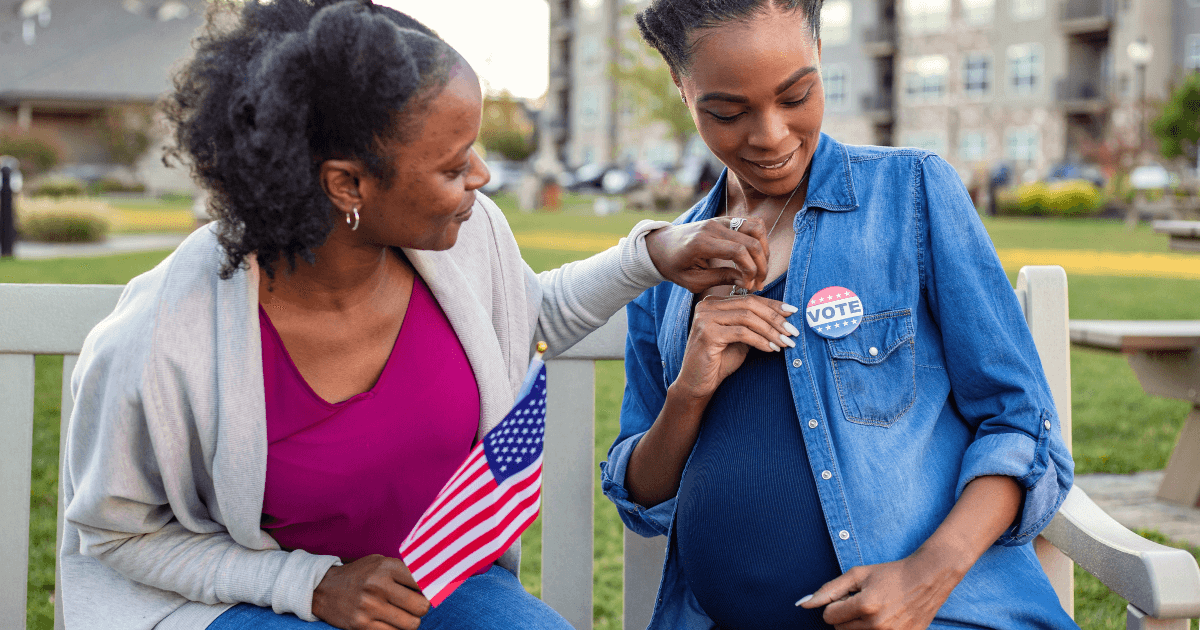
[Editor’s Note: Tuesday was National Voter Registration Day – and there’s still time to register for the coming election. Clinicians can advocate for their patients to vote, and health centers can be a nonpartisan site for voter registration. Read on to learn why and how, in this month’s blog from Kaethe Weingarten, PhD, Director of Witness to Witness. Visit our new Words Matter page to read Dr. Weingarten’s recent series of articles on the health impact of anti-immigrant rhetoric, watch video stories on immigrants’ lived experiences, support the work, and sign up for webinars on the topic.]
On November 5, 2024, it is projected that 244 million US citizens will be eligible to vote for national, state, and local candidates running for elected office to serve their constituents. According to Pew Research, an estimated 36.2 million Latinx persons are eligible to vote in 2024, an increase from the 32.3 million who were eligible to vote in 2020. Astoundingly, this represents 50% of the total growth over the last four years of those eligible to vote. Yet, Latinx persons are less likely to be eligible to vote than the US population as a whole, because some Latinx persons are too young to vote, and some are not US citizens.1 Further, not all Latinx persons who are eligible to vote, as is true for other Americans, do actually cast a ballot. Still, it is projected that 14.7% of all eligible voters for the 2024 election will be Latinx, nearly double the percentage eligible to vote in 2000.
Of note, the percentages of Latinx voters by age lean younger than eligible voters overall. Only 33% of Latinx eligible voters are ages 50 and older, compared with 48% of all US eligible voters. The difference is particularly noteworthy in the youngest group of voters, those ages 18 to 29, where Latinx eligible voters were 31% versus 20% of voters overall in 2022. (All statistics in this paragraph are from Pew Research.)
Voto Latino, the largest Latinx registration and turnout operation in the United States, intends to register as many as 800,000 Latinx voters before Election Day. The organization hopes to improve the rate of voting for Latinx people, which historically has lower voter turnout than other groups, at times as much as ten to 20 percent lower turnout.
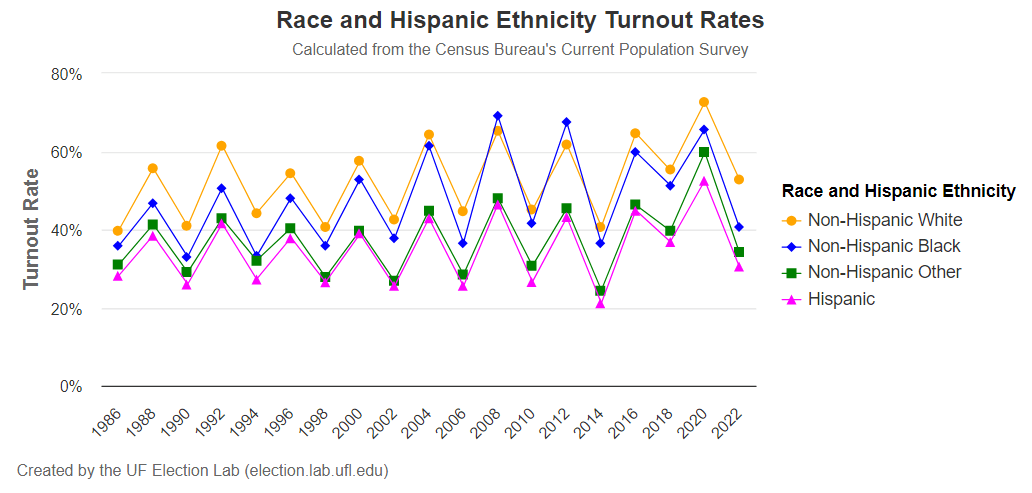
In general, it’s important to vote to ensure that our views are represented, since the candidates whose views align with ours will pass legislation that affects policies that impact our daily life. Further, voting is a way that all of us can participate in maintaining the health of our democracy. All over the world, democracy is threatened. This is also true in the US. AltaMed is an organization in Southern California that has been working to improve health care for over 55 years. They believe that voting is so important that they have several initiatives in relation to increasing the numbers of people who do vote. They articulate their concern this way: “From stringent voter ID laws to purges of voter rolls, attempts to restrict access to the ballot persist, disproportionately impacting communities of color, low-income individuals, and marginalized groups.” Voting in an election strengthens democracy at all levels of local, state, and national government.
Voting is specifically important in relation to health care. Of the many economic worries voters have, health care costs are second only to concerns about inflation. The candidates at all levels of government support different policies with regard to corralling health care costs. AltaMed delineates five health care issues that will be impacted by the 2024 election. They are: health care access and coverage, prescription drug prices, women’s health and reproductive rights, behavioral health, and substance abuse and health equity. Different candidates will propose different ways of addressing these issues and it is important to vote for candidates that represent our views.
For many of us, thinking about voting as a means to impact our health care is confusing. This graphic may help.
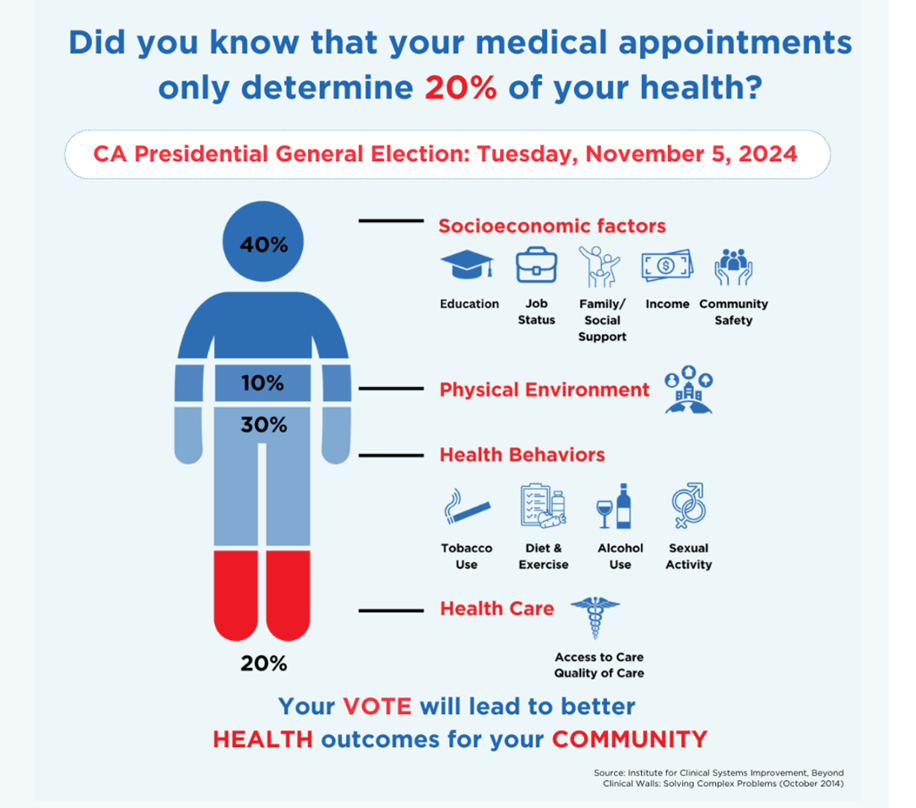
It shows that attending our medical appointments only accounts for 20% of our health. Socioeconomic factors like education, income, community safety, and our physical environment, like clean water and air, account for 50% of our health. That 50% is directly impacted by local, state, and national regulations and laws that are determined by those officials we elect. If we want to increase access to resources and services that promote health equity, then our vote matters.
In a recent blog, Claire Seda describes how attending to these socioeconomic factors and the physical environment can be done if health care workers add a structural lens to understanding the problems that their patients present. In the blog, Seda presents the case of a Haitian patient in Maine. The physician, Cheryl Seymour, MD, used a structural lens to identify the many factors affecting the patient’s diabetes course. The blog makes this point:
The screenings that are in place today at health centers name the social determinants of health – poverty, social isolation, lack of transportation, food deserts – that drive the health conditions of our patients. However, these screenings do not give clinicians a complete picture of what created the social determinants in the first place. To build a more comprehensive understanding of why a patient is ill, one must look outside of the individual’s experience, and into the larger social structures – policies and regulations, immigration practices, and health care systems – to identify root causes.
Voting makes a difference precisely at the level of the root cause factors.
While the above analysis may seem radical to some, it is actually a mainstream position. In 2022, the American Medical Association passed a resolution stating that “voting is a social determinant of health and significantly contributes to the analyses of other social determinants of health as a key metric.” This is particularly true for historically marginalized communities.
Expanding access to voting though voter registration is one way to use political equity as a means to enhance health equity. Community health centers (CHCs) are particularly well suited to assist politically disadvantaged groups with voting, since these are already the groups they serve: “About 62% of patients are members of racial and ethnic minority groups, 90% are at or below the 200% federal poverty level, and 24% are best served in a language other than English.” CHCs are also located in medically underserved areas and these are often areas that are far from designated voter registration sites. In one non-partisan voter registration project in the 2018 midterm elections detailed in a commentary in Health Services Research, an effort was made at a health center to register patients aged 18 to 22. With follow up, they found that 44% of those who had registered at the primary care clinic went on to vote at that election cycle.

Drive distance mapped using 2020 census blocks in Philadelphia County, PA. Comparison of the drive distance if only DMVs were utilized for voter registration (left) compared to the service area size if only hospitals were utilized (middle) and if both hospitals and DMVs are utilized (right). If both DMVs and hospitals are utilized, all census blocks have a shorter drive distance to a voter registration site.
The authors conclude persuasively: “Ultimately, health care providers have an incredible opportunity to shape the communities where they practice and improve health outcomes for generations, without having to write a prescription or pick up a scalpel. To expand voter registration into health care settings is an investment in improving the political power of underrepresented populations, and therefore, is an investment in the health and well-being of our communities.”
This commentary aligns with the findings of Voto Latino, which has identified “two main obstacles to Latinx participation: nobody is asking them to participate, and complex voter registration and voting procedures prevent them from casting ballots.” It often requires multiple contacts with a person before they actually register. As to how often a person who is registered to vote actually votes? María Teresa Kumar, the president of Voto Latino, says that 82% of the people they registered in 2020 voted.
Making voter registration easier is important and placing registration materials in convenient locations is key to doing that. Just as Departments of Motor Vehicles are locations where nonpartisan voter registration happens, so too health care facilities can be sites for nonpartisan voter registration. The Association of American Medical Colleges, AAMC Center for Health Justice has developed a fact sheet in collaboration with Vot-ER, a nonpartisan organization that works to integrate voter education and registration into health care settings. In their fact sheet they note the legislation that has passed at the federal level since 1993 that gives health care institutions the right to engage in nonpartisan voter registration efforts.
They give clear guidance as to the activities that are permitted and encouraged at health care institutions, such as:
- “Asking students, staff, or patients if they would like to register to vote and point them to voter registration resources.
- Telling students, staff, or patients that the institution offers a service to help them register to vote but that it does not endorse any political party.
- Helping students, staff, or patients fill out voter registration forms while remaining neutral.
“And those activities that must be avoided:
- Do not state or imply that voters should vote a particular way.
- Do not communicate party or candidate preferences.
- Do not mention policy positions or party platforms.”
If your institution is not currently a site for voter registration, you can reach out to your local or state election office to express the interest of your health care facility in becoming a voter registration site. They will be able to provide information on the requirements and procedures for becoming a voter registration site. Voting is voice; use it!
1 While there have been assertions that noncitizens vote, these instances are rare. There are many checks in place at registration locations to ensure that only those who are eligible to vote are registered.
- Log in to post comments
